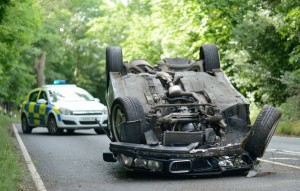Understanding Collision and Comprehensive Coverage in Auto Insurance
At the minimum, the law requires car owners to have general liability coverage when they get auto insurance. However, there are other types of coverage that car owners can avail, such as collision and comprehensive coverage, to get the full protection they need.
 Collision and Comprehensive Coverage
Collision and Comprehensive Coverage
Unlike with general liability coverage that focuses on paying for damages on others’ vehicles, collision and comprehensive coverage is designed to pay for damages sustained by your own vehicle.
A quick look at collision and comprehensive coverage will show the following similarities:
- Both cover damages done to your car
- Both coverage limits are dictated by the cash value of your car
- Both have a deductible
Additionally, collision and comprehensive rates are affected by the same factors of general liability coverage like the driver’s age, their driving history, and credit profile, among other things.
Key Differences
While auto insurance with collision and comprehensive coverage can take care of the damage done to your car, car owners should not make the mistake of interchanging one for the other.
To put it simply, collision coverage deals with damages from a collision with another vehicle or an object (e.g. trees, fences, lamp posts, and etc.) while comprehensive coverage deals with damages as a result of anything but collision (e.g. fire, theft, vandalism, and etc.).
Understanding their similarities and differences is important so you can get the coverage you need as, in the end, you may realize that both types of coverage actually complement one another.
For the best auto insurance rates from over 300 insurance programs, trust only Breathe Easy Insurance. If you’d like to speak with an agent who can provide you with further information about collision and comprehensive coverage, please do not hesitate to contact us at 866.822.7755; we’d be glad to hear from you.
